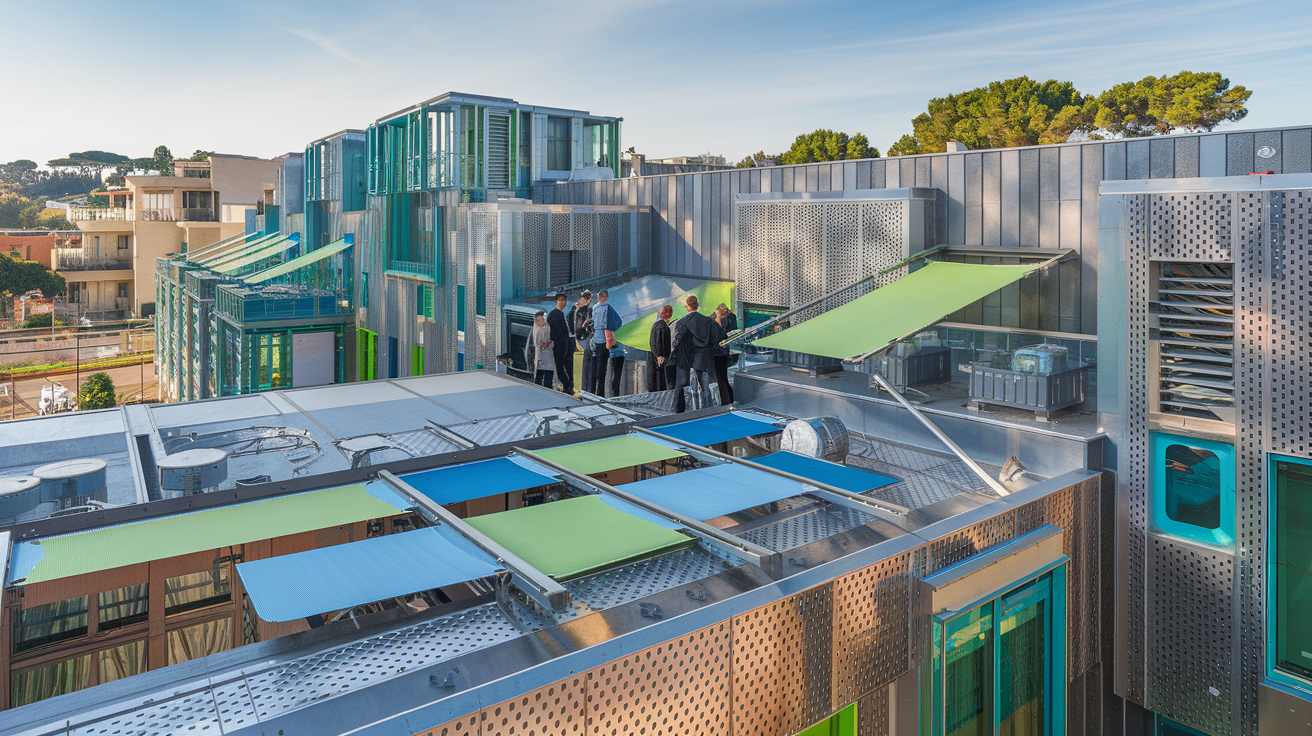Introduction
In the quest for sustainable living, the construction industry has been at the forefront of innovation, particularly in the development of energy-efficient buildings. One such innovation that has gained significant traction is the use of perforated metal in architectural designs. This versatile material offers a range of benefits that contribute to the energy efficiency of modern structures, making it a cornerstone in green architecture.
Perforated Metal: A Sustainable Choice
Perforated metal is a material that has been engineered with precision to include a pattern of holes or gaps. This design not only adds aesthetic appeal but also serves practical purposes that are crucial for energy conservation in buildings.
Sunlight and Temperature Regulation
One of the primary roles of perforated metal in energy-efficient buildings is its ability to regulate sunlight and temperature. The perforations allow for natural light to filter through while blocking out direct sunlight, which can significantly reduce the need for artificial lighting and air conditioning. This results in a cooler interior environment, especially during hot summer months, thereby reducing the overall energy consumption of the building.
Ventilation and Airflow
Another critical aspect of energy-efficient buildings is proper ventilation. Perforated metal panels can be strategically placed to facilitate natural ventilation, allowing fresh air to circulate throughout the building. This reduces the reliance on mechanical ventilation systems, which consume a substantial amount of energy. The controlled airflow also helps in maintaining a comfortable indoor climate, further enhancing energy savings.
Noise Reduction
In urban environments, noise pollution can be a significant issue. Perforated metal panels can be designed to absorb sound, thereby reducing the noise levels inside buildings. This acoustic benefit not only contributes to the comfort of the occupants but also reduces the need for energy-intensive soundproofing materials and HVAC systems that are often used to combat noise pollution.
Case Studies: Perforated Metal in Action
Several buildings around the world have successfully integrated perforated metal into their designs, showcasing its potential in energy-efficient architecture. For instance, the perforated metal facade of the Smith residence not only provides shade and ventilation but also adds a unique visual appeal to the structure. Similarly, the Green Office Complex utilizes perforated metal panels to manage sunlight and temperature, resulting in a 30% reduction in energy costs compared to conventional office buildings.
Conclusion
Perforated metal is an innovative and sustainable material that plays a pivotal role in the design of energy-efficient buildings. Its ability to regulate sunlight, enhance ventilation, and reduce noise makes it an invaluable asset in the construction of modern, eco-friendly structures. As the world continues to embrace green architecture, the use of perforated metal is likely to become even more prevalent, setting new standards for energy efficiency in the built environment.
Post time: Feb-19-2025




